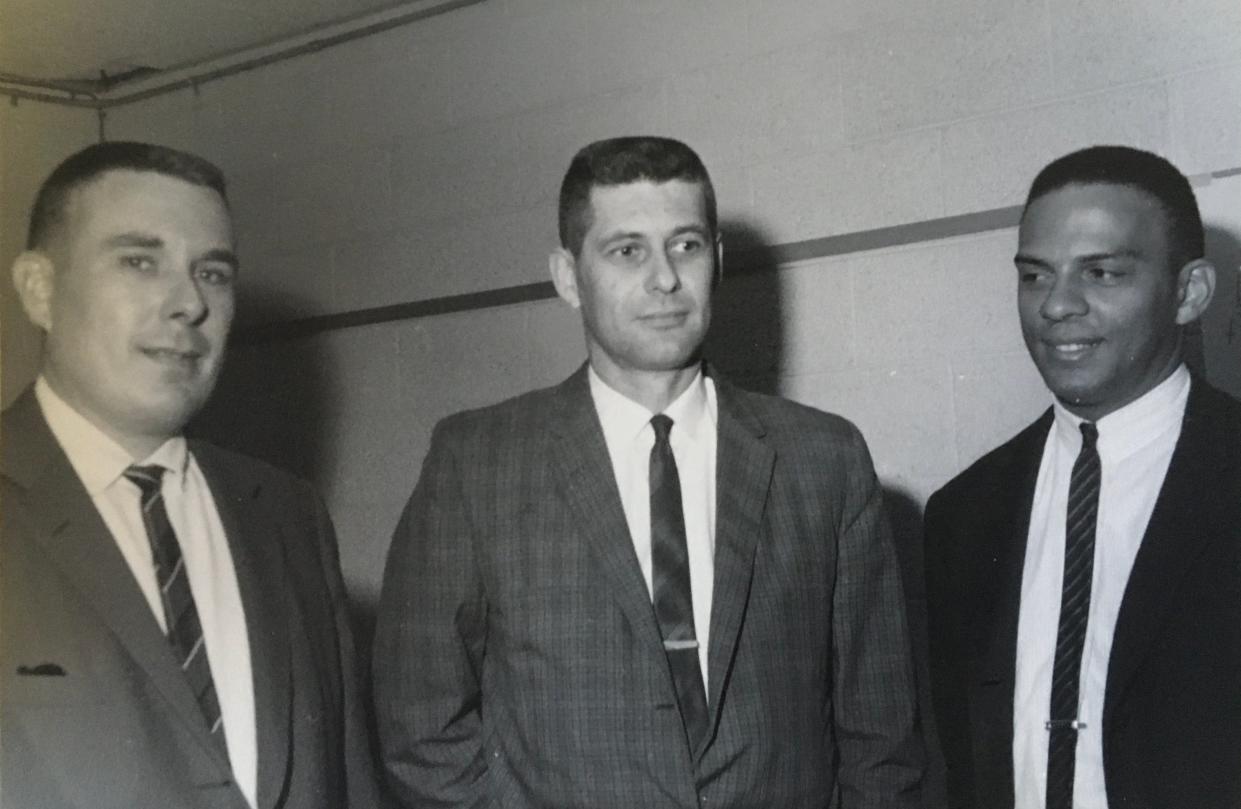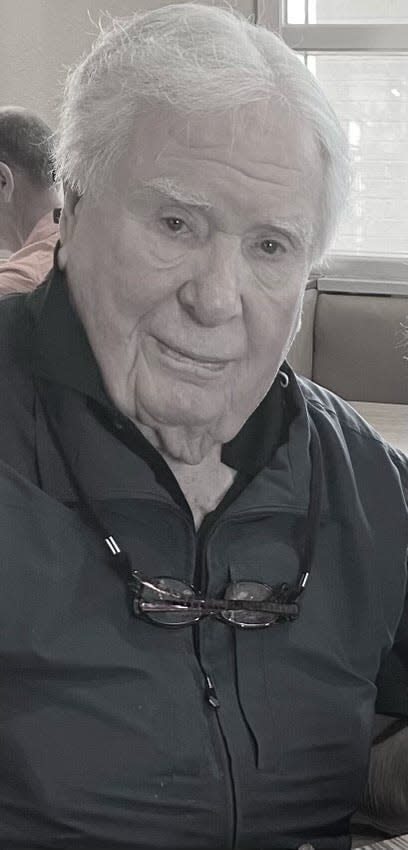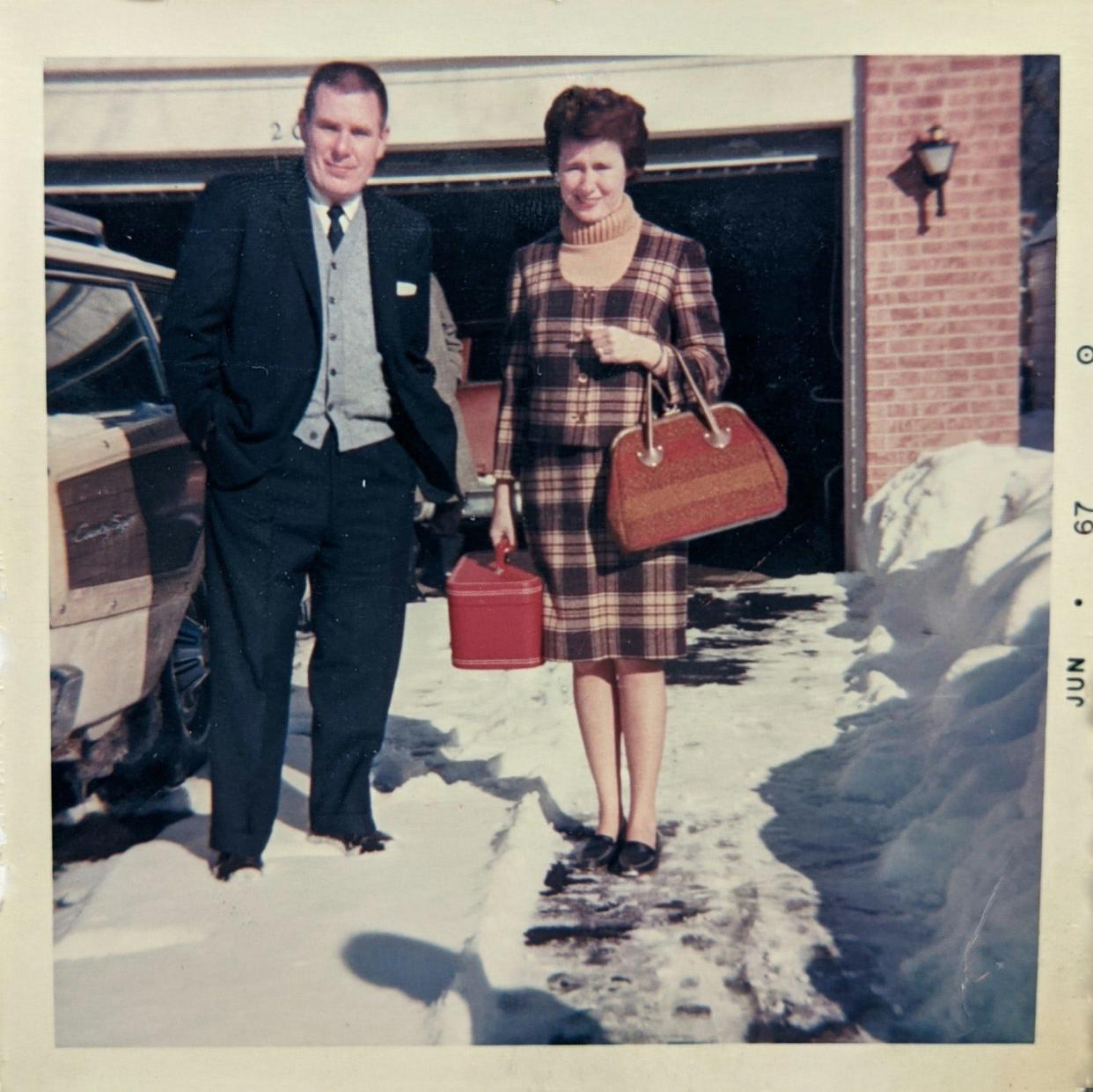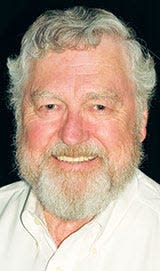Memories of James Edward Spicer, who fought against racism in Oak Ridge
John Job and Rachael Colby provide their unique insights into their relationships with Dr. James Spicer, a former minister at the United Church, Chapel on the Hill, and a life-long civil rights pioneer who died recently.
First, John Job (who introduced me to "An Oak Ridge Story," which is a marvelous manuscript written by Dr. Spicer and where I first found the story of the desegregation of the Davis Brothers Cafeteria.

***
When Shirley and Jim Spicer, their daughters Lynn, Jane, Jill and Laura, and their car-chasin’ dog Trina moved into the house across the street from my family on Maple Lane in 1962, they brought their Midwestern unflappability, their big city (Chicago) sophistication, and their sheer joy at finding themselves part of such a fascinating community in such a beautiful locale. Jim was the new pastor at the United Church, caretakers of the historical gem at the bottom of Kentucky Avenue, the Chapel on the Hill.
Jim was a dramatic change for the United Church, replacing the more reserved and starchier Harley Patterson. The change was like JFK replacing Dwight Eisenhower. With a magic I didn’t understand at the time, the Pattersons stern tenure in the United Church’s parsonage changed overnight to the Spicer’s effervescent embrace of their new home, their new church family, and a city ripe for change.

They fit in immediately. And while I had a problem with the six Spicers and their little dog living in a "D" house while right across the street there were nine Jobs and a collie on top of each other in a "C" house, I learned to roll with it. By 1963, there were four Spicer kids and four Job kids walking through the woods to school every day at Cedar Hill and, in following years, traipsing through the woods to the Church, to Jackson Square, to Jefferson Junior High, the Ridge Theater, the Music Box, the Mayflower Cafeteria ... .
Jim was soon joined by Roy Colby as co-pastor of Chapel on the Hill. They had a sort of "Mission Impossible" air about them, and their mission, should they choose to accept it, was to wring “Jim Crow” out of the civic culture of Oak Ridge. They arrived at the nexus of John F. Kennedy's very brief hold on the presidency, and the rising influence of Martin Luther King Jr.’s hold on the American imagination.
This is a gross oversimplification of what went down, but true, nonetheless. The dashing new president of the United States, who had visited Oak Ridge when he was a senator, was appalled to learn that businesses here were allowed to refuse service to African Americans, that this culture was built into the Secret City’s Manhattan Project origins, and that school desegregation was only lip service as long as Davis Brothers Cafeteria could operate the way it did. So, the president called our mayor and said “Do something!” And the mayor called Jim Spicer and told him he (Jim) was the chairman of a new committee. The Do Something Committee.

My family went to Chapel on the Hill every Sunday. We sat in the third pew from the front on the left side of the Chapel. The entire third pew. In those days, the Chapel was filled to overflowing, and the inimitable Alice Lyman held forth on the organ from the choir balcony. And we listened with rapt attention to everything the young Chicagoans chose to dissect with their intellectual dexterity, clarity, and immediacy.
It was pretty exhilarating, even for a 10-year-old. But what few of the congregation understood was that Jim and Roy had identified targets and were systematically knocking them off, so to speak. Restaurants. Laundromats. Barber shops. Any business that wouldn’t welcome Black customers found themselves going toe-to-toe with a man who wouldn’t back down.
Jim certainly got pushed to the edge. There was the barber who put him in a head lock and ran clippers from the nape of his neck to his forehead, to which Jim said “Thanks for the haircut. I get the message.”
There were the rifle-toting Klansmen trying to break up protests at a laundromat who soiled their britches when Jim asked if they could see the FBI agents watching from the trees two blocks away. Probably the best joke Jim ever pulled.
And there was the Cumberland County sheriff’s deputy and the Tennessee state trooper who told Jim, “If they come for you, don’t call me, ‘cause I ain’t coming' when racist locals threatened an 'everyone’s welcome' United Church youth retreat camped at Ozone Falls for a week.
I was in that group. “United” actually meant something to us.
The Jim Crow dominoes fell one after another, silently, like rotten trees in a thick forest as the months crept by. Less than three months into Lynn Spicer’s and my year in sixth grade at Cedar Hill, JFK was dead and buried at Arlington. In ’64 and ’65, Vietnam became an F-5 tornado that uprooted everything in its path.
I was still too young to grasp what was happening, but I had an instinctive understanding of how the world was somehow closing in on Jim Spicer and Roy Colby, just from the gravity and timbre of their Sunday sermons. It was only 20 years after Hiroshima, and V-J Day giddiness had given way to a more serious self-examination - over race, military influence, and national direction. Before bullets silenced Martin Luther King and a second Kennedy, the Spicers and Colbys had moved back north to Chicago.
My awareness of what the Spicers were involved in for the next 35 years was all second hand, because I was off on my own whirlwind. I knew they ran a residential treatment center for kids with various degrees of radical attachment disorder and other behavioral tailspins. From the time they left Oak Ridge, it would be almost 50 years before I saw Jim and Shirley again when they dropped in to see my mother at the Greenfield assisted living center not long before she passed away.
I was fortunate enough to spend a few hours with Jim last fall when I visited him with Rachael Colby, the daughter-in-law of Roy Colby. Jim was in a wheelchair, but he was robust, jovial, unforgettable as always. He gave me a copy of his book, “The Parent Process: Enabling Self-Directed Wholeness.” And as I’ve studied his research, I’ve seen that Jim was himself a study in Self-Directed Wholeness.
This past weekend, I got an email from Lynn Spicer to tell me Jim was under hospice care at home after fighting COVID for two weeks in a hospital. The next night, she wrote that he had just slipped away, with his hands holding hers.
Jim Spicer had a profound impact on every place he ever lived and worked, and we are blessed that Oak Ridge was on his itinerary.
***
Thank you, John, now Rachael Colby, Roy Colby's daughter-in-law ...
Beneath Dr. James Spicer’s charming drawl and calm demeanor lay a steely resolve, a fiery soul with a heart for humanity. Dr. Spicer and my father-in-law, the Rev. Roy Colby Jr., were best friends, co-ministers of Chapel on the Hill, and lifelong civil rights activists. They met while university students in Chicago before moving to Oak Ridge, Tennessee in the '60s. Jean Colby, my mother-in-law, reminisced about Dr. Spicer’s caring character, sense of humor, and his words of wisdom.
“The Spicers were like second parents,” said Sarah (Colby) Clay. “Dr. Spicer and Dad signed my first Bible. Among Jim’s countless attributes were his appreciation of good food and his knack for bestowing compliments. In the 1990s, Mom, Dad, Jim, and Shirley visited me in Vermont. At the end of the meal, Jim said, ‘Well! That was every bit as good as a Southern church supper!’ No higher praise. Thanks, Jim! You’re remembered with love and respect.”
Many people see wrongdoing and do nothing, or don’t extend themselves to the amazing extreme that Dr. Spicer and other heroes have in the fight for civil rights and other just causes.
He could have stayed within the bounds of the safety and comfort of the churches he pastored and the lifestyle it afforded him. Instead, he chose uproars over his call to integrate, pickets, sit-ins, late-night phone calls meant to intimidate, confrontations with racist mobsters, and guns pointed at him.
“If you’d known the risks and impact on you and your family, would you still have helped integrate Oak Ridge?”
“Absolutely,” Dr. Spicer said.
Dr. Spicer lived a life of love and service to others. He chose to not only see problems, but to be part of the solutions. However, he was quick to say he’s no hero, rather, the heroes are the brave citizens of Scarboro and others who helped with integration.
“We’ve lost a great man and friend. He has helped so many people along the way. I am losing so many friends and people I know who have made such a positive impact. I hope there’s somebody gearing up to take their place. I know there is,” friend and congregant Judy Cohan said.
Former Scarboro resident Craig Freeman took a job at the Camelot Care Center branch in Roane County, Tennessee, straight out of college in the 1980s. He remained at Camelot, a residential treatment program for youth founded and run by Dr. Spicer, for 16 years.
To the children others wrote off as lost causes, Dr. Spicer offered a second chance.
“A very gentle man that created a place for kids to have an opportunity to overcome the difficulties in their lives. He set the tone for staff,” Mr. Freeman said. “We learned to take care of kids who didn’t know how to trust and how to deal with conflict. Doc Spicer provided a home for kids to be safe, so they could learn, grow, and heal. Everything I learned working at Camelot Care Center made every other job a piece of cake for me.”
Craig Freeman now works for Roane County Schools as a student support services worker.
Good leadership isn’t about dictatorship, but discipleship. Good leaders not only point the way - they make a way if needed, and help others navigate it. Our job is to learn from their inspiring and instructive example and fulfill our part in the story of life.
Dr. Spicer’s love and dedication to his wife and family was clear. He modeled humility and inclusivity. His staff ate at his table. I never felt hurried in his presence; he made space for people. I’m a grateful recipient of his gracious hospitality.
“Wellll,” he said, and paused and pondered before he answered my questions about his part in integrating Oak Ridge and other matters. A skill all would benefit to emulate. I’ll miss the salutation in his letters, “My Dear Rachael,” and his fitting signature, “Old Spice.”
I still hear his voice, like low rolling thunder before a summer rain, “calling us all back to a very important job we’ve not finished.”
Here are quotes Racheal captured from others who knew Dr. Spicer:
“I had the distinct pleasure of working with Dr. Jim and Shirley Spicer at Camelot Care Centers in Kingston, Tennessee, for almost 20 years,” Jim Pedigo said.
“My favorite Doc Spicer story came from Oak Ridge pediatrician Dr. Bill Hardee, who became the long-term medical director at Camelot. Dr. Hardee said while visiting Doc in Glenview, Illinois to speak with him about becoming the minister of Chapel on the Hill, he noticed the bottom drawer of the file cabinet beside his desk was labeled ‘Sacred,’ and the top drawer ‘Top Sacred.’
Dr. Hardy said the moment he saw that file cabinet he knew Doc was the right man for the job!
Doc Spicer and my dad were the two smartest men I have ever met - both instrumental in shaping my life and giving me the tools to be successful. Doc was a psychologist, and my dad an electrical engineer, but they both uniquely understood the human process of how to encourage and trust in others by effectively communicating and teaching skill sets needed to accomplish the project at hand. I am blessed to have had them in my life.”
***
Thank you, John Job, and Rachael Colby! Your insights into Dr. Spicer’s amazingly devoted life enlighten the readers to a special man who dedicated his life to righting things he saw as injustices. I have often told the story of the Davis Brothers Cafeteria and appreciate so much that John Job first acquainted me with that powerful Oak Ridge effort that likely resulted in many more restaurants desegregating their establishments across the Southeast. Often such an impact by single individuals goes without remark or recognition, so Guilford Glazer, developer of the Downtown Shopping Center in Oak Ridge, deserves recognition as well as his son.
Read more about the details of Dr. Spicer’s efforts in Oak Ridge to further integration by Rachael Colby: https://www.oakridger.com/story/lifestyle/features/2021/10/22/integration-oak-ridge-unique-perspective/8467161002/.
Read Dr. Spicer’s reaction to the above Historically Speaking column: https://www.oakridger.com/story/opinion/columns/guest/2021/12/17/commentary-the-integration-oak-ridge/6465723001/.
D. Ray Smith is Oak Ridge's city historian. His Historically Speaking column is published each week in The Oak Ridger.

This article originally appeared on Oakridger: Memories of James Spicer, who fought against racism in Oak Ridge
